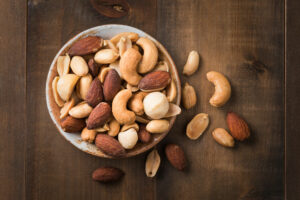
7 human foods that cats can enjoy
Pet owners are extremely protective of their fur babies. They want to ensure that their pets get the best of care and, most importantly, food. Most often, one gets tempted to share the food from the plates with them. But, not all the food we consume is safe for our pet cats. This makes it important to stay informed on the food items that are safe or harmful for cats. Read on to learn more. Whole grain and whole grain foods You can also share whole grain products like brown side, oatmeal, and more with your cat in moderate quantities. Whole grains are nutritionally dense and contain iron, fiber, vitamins, and tons of minerals that can boost your cat’s health. The fiber content can help improve digestive health, while vitamins and minerals can help make their coat healthy and shiny. Cheese Cats across the globe share an intense love for all things dairy. Not only will they enjoy a bowl of fresh milk, but they also love other dairy products such as cheese, yogurt, and even butter. When they are born, cats rely on their mother’s milk to survive for the first two to three months. But, as they grow, cats, much like many humans, tend to develop an intolerance for lactose, a protein that is found in milk and milk products.
Read More 










